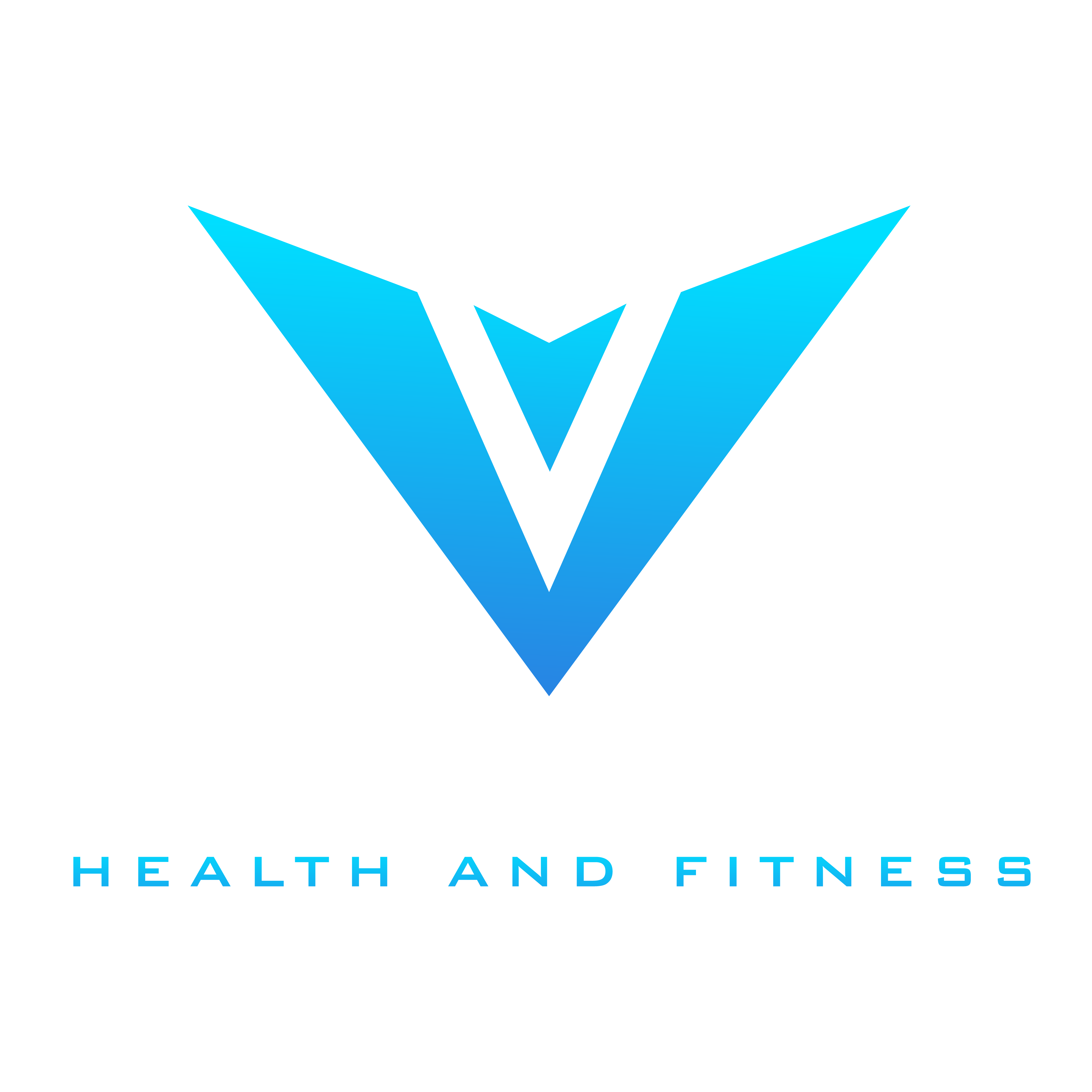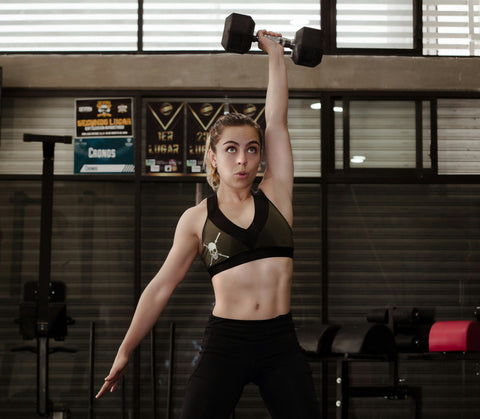Disclaimer: These workouts are provided for informational purposes only. Please consult with a healthcare provider or fitness professional before starting any new exercise program, especially if you have any pre-existing medical conditions or concerns. Exercise involves risks, and proper form is essential to avoid injury. Vital Vibe Health and Fitness is not responsible for any injuries or health issues that may result from participating in these exercises. Listen to your body, and modify exercises as needed.
Day 1: HIIT at Home: Get Fit Without Leaving Your Living Room
Workout Overview
High-Intensity Interval Training (HIIT) is a fantastic way to burn calories, boost endurance, and build strength—all from the comfort of your own home. This quick and effective workout combines bursts of intense exercise with short recovery periods to maximize your fitness gains in a short amount of time. No equipment needed!
Workout Format:
-
Duration: 20 minutes
-
Structure: 45 seconds work, 15 seconds rest
-
Rounds: 3-4 (depending on your fitness level)
Warm-Up (5 minutes):
-
Jumping Jacks (1 minute)
-
Arm Circles (30 seconds forward, 30 seconds backward)
-
High Knees (1 minute)
-
Bodyweight Squats (1 minute)
-
Hip Circles (1 minute)
The HIIT Workout:
-
Burpees: Full-body movement to spike your heart rate.
-
Squat Jumps: Build lower body strength and power.
-
Push-Ups: Engage chest, triceps, and core.
-
Mountain Climbers: Great for cardio and core.
-
Plank to Push-Up: Targets shoulders, triceps, and core.
-
High Knees: Keep the pace quick to boost your heart rate.
-
Lunge Jumps: Explosive lower body workout.
-
Plank Jacks: Core and cardio combo.
-
Bicycle Crunches: Focus on the core with rotational movement.
-
Tuck Jumps: Engage the legs and improve coordination.
Cool Down (5 minutes):
-
Forward Fold Stretch (1 minute)
-
Quad Stretch (30 seconds each side)
-
Cat-Cow Stretch (1 minute)
-
Child’s Pose (1 minute)
-
Deep Breathing (1 minute)
Tips for Success:
-
Maintain good form, especially as you get tired.
-
Listen to your body and modify exercises if needed.
-
Push yourself during the work periods but focus on controlled movements.
Day 2: CrossFit Open 25.1 Workout: Bring Your Best!
Workout Overview
The CrossFit Open 25.1 workout is designed to test your strength, endurance, and grit. This workout combines high-intensity movements and weightlifting to challenge athletes of all levels. The goal is to complete as many rounds and reps as possible (AMRAP) within the 15-minute time cap.
The Workout:
AMRAP 15 Minutes:
-
3 Lateral Burpees Over the Dumbbell (stepping in and out is allowed)
-
3 Dumbbell Hang Clean-to-Overheads (50 lbs for men, 35 lbs for women)
-
30-Foot Walking Lunge (15 feet out and 15 feet back)
After completing each round, add 3 reps to the burpees and hang clean-to-overheads (i.e., 6 reps in the second round, 9 in the third, and so on). The walking lunge distance remains 30 feet each round.
Movement Standards:
-
Lateral Burpees Over the Dumbbell: Begin beside the dumbbell, perform a burpee ensuring chest and thighs touch the ground, then jump laterally over the dumbbell. Both feet must leave the ground simultaneously during the jump.
-
Dumbbell Hang Clean-to-Overhead: Start with the dumbbell below the hips. Clean the dumbbell to the shoulder (a snatch is not permitted), then press or jerk it overhead until the elbow, hips, and knees are fully extended, with the dumbbell aligned over the body.
-
Walking Lunge: Each lunge begins with feet together. Step forward, ensuring the trailing knee touches the ground, then rise to full hip and knee extension before the next step. Each 15-foot segment counts as one rep.
Official Scaling Options:
Scaled Version of 25.1:
AMRAP 15 Minutes:
-
3 Lateral Burpees Over the Dumbbell (stepping in and out is allowed, no two-foot takeoff required)
-
3 Dumbbell Hang Clean-to-Overheads (35 lbs for men, 20 lbs for women)
-
30-Foot Walking Lunge (15 feet out and 15 feet back)
Movement Standards for Scaled Version:
-
Lateral Burpees: Athletes may step in and out of burpees and step over the dumbbell.
-
Dumbbell Hang Clean-to-Overhead: The dumbbell must start below the hips. Athletes can switch hands as needed.
-
Walking Lunge: Each lunge must reach full hip and knee extension before the next step.
Tips for Success:
-
Pacing: Start at a sustainable pace to avoid early burnout.
-
Efficient Transitions: Minimize rest between movements to maximize reps.
-
Maintain Form: Proper technique reduces the risk of injury and ensures all reps are counted.
-
Breathing: Establish a consistent breathing rhythm to maintain endurance throughout the workout.
Warm-Up:
-
5 minutes of light cardio (jump rope, air squats, or rowing)
-
Dynamic stretches: leg swings, arm circles, and hip openers
-
Movement-specific prep: Perform a few reps of each movement at a lighter intensity
Cool Down:
-
Gentle cardio for 5 minutes to bring your heart rate down
-
Stretching: Focus on quads, shoulders, hamstrings, and lats
-
Foam rolling if needed
Conclusion:
The 25.1 CrossFit Open workout is all about strategy, efficiency, and pushing your limits. Scale as needed, maintain consistent pacing, and most importantly—have fun with it. Whether you're competing for a spot on the leaderboard or just challenging yourself, give it your all!
Day 3: Aerobic Capacity Workout: Boost Your Endurance
Workout Overview
Developing aerobic capacity is essential for enhancing your overall fitness and improving performance in both short and long-duration workouts. This workout is designed to build stamina, improve cardiovascular health, and increase your body's efficiency in utilizing oxygen. Suitable for all fitness levels, the focus is on maintaining a steady pace and consistent effort throughout.
Workout Format:
-
Duration: 40 minutes
-
Structure: Endurance intervals with active recovery
Warm-Up (10 minutes):
-
5 minutes easy-paced cardio: Choose between jogging, cycling, rowing, or jumping rope.
-
Dynamic stretches: Leg swings, arm circles, hip openers, and high knees.
-
Drills: 2 minutes of alternating between 30 seconds of butt kicks and 30 seconds of high knees.
The Aerobic Capacity Workout:
Main Set (4 Rounds):
-
5 minutes at moderate intensity: Aim for 70-75% of your max effort. This should feel sustainable but challenging (about 7/10 on the effort scale).
-
2 minutes active recovery: Maintain movement at a low intensity—light jogging, walking, or a slow pace on the bike or rower.
Pacing Tips:
-
During the moderate intensity phase, maintain a pace where you can speak in short sentences but not hold a full conversation.
-
Focus on even breathing and staying relaxed to avoid early fatigue.
Cool Down (5 minutes):
-
Gradual slow down: 2 minutes of walking or light cycling.
-
Static stretches: Hold each stretch for 30 seconds, focusing on hamstrings, quads, calves, and hip flexors.
-
Deep breathing exercises: Inhale deeply for 4 seconds, hold for 2 seconds, exhale slowly for 6 seconds to reduce your heart rate.
Scaling Options:
-
Beginner: Reduce each moderate-intensity interval to 3 minutes and increase recovery time to 3 minutes.
-
Advanced: Increase moderate-intensity intervals to 7 minutes while keeping recovery at 2 minutes.
-
Low Impact: Use a stationary bike or rower to minimize joint impact while maintaining cardiovascular intensity.
Conclusion:
This aerobic capacity workout is perfect for building endurance and improving your ability to sustain longer workouts at a higher intensity. Incorporate this workout into your weekly routine and gradually increase the intensity as your stamina improves. The key is consistency—stick with it and enjoy the progress!
Day 4: Bodybuilding Workout: Leg Day
Workout Overview
This leg-focused bodybuilding workout is designed to build strength, size, and stability in the lower body. With an emphasis on both compound and isolation exercises, this workout targets the quads, hamstrings, glutes, and calves. The goal is to create balanced leg development and improve overall lower body power.
Workout Format:
-
Duration: 60 minutes
-
Structure: 4 sets of 8-12 reps per exercise
-
Rest: 60-90 seconds between sets
Warm-Up (10 minutes):
-
5 minutes of light cardio: Walking, cycling, or dynamic stretching to increase heart rate.
-
Dynamic stretches: Leg swings, hip circles, lunges, and ankle mobility drills.
-
Movement prep: 1-2 light sets of squats and lunges to activate muscles.
Today's Leg Day Workout:
-
Squats: 4 sets of 8-12 reps
-
Leg Press: 4 sets of 10-15 reps
-
Hamstring Curls: 4 sets of 10-15 reps
-
Leg Extensions: 4 sets of 10-15 reps
-
Calf Raises: 4 sets of 15-20 reps
-
Glute Bridges: 4 sets of 10-15 reps
Cool Down (5 minutes):
-
Gentle cardio: Walking or light cycling
-
Static stretches: Focus on quads, hamstrings, calves, and glutes
Tips for Success:
-
Progressive Overload: Gradually increase weight or volume each week to continue seeing progress.
-
Controlled Movements: Focus on form and control rather than just moving weight.
-
Rest and Recovery: Allow muscle groups 48 hours of rest before targeting them again.
-
Nutrition: Support muscle growth with a protein-rich diet and proper hydration.
Scaling Options:
-
Beginner: Reduce sets to 3 and aim for lighter weights with higher reps (12-15 per set).
-
Advanced: Incorporate drop sets, supersets, or tempo changes to increase intensity.
-
Low Impact: Use resistance bands or machines if free weights are not an option.
Conclusion:
This leg workout is perfect for building strength and muscle in the lower body. Stay consistent, push your limits, and focus on form to see the best results.
Day 5: Strength Training Workout: Build Power and Endurance
Workout Overview
This single-day strength training workout is designed to increase raw strength and power through heavy compound lifts and controlled accessory work. The workout targets all major muscle groups, focusing on building functional strength and improving performance.
Workout Format:
-
Duration: 60-75 minutes
-
Structure: 5 sets of 5 reps for strength exercises, 3 sets of 8-12 reps for accessory movements
-
Rest: 90-120 seconds between strength sets, 60-90 seconds for accessory work
Warm-Up (10 minutes):
-
5 minutes of light cardio: Rowing, brisk walking, or cycling to increase heart rate.
-
Dynamic stretches: Leg swings, arm circles, torso twists, and hip openers.
-
Movement-specific drills: 1-2 sets of light barbell work (e.g., squats, deadlifts) to prep for heavy lifts.
Today's Strength Training Workout:
Primary Lifts:
-
Back Squat: 5 sets of 5 reps (focus on depth and power)
-
Deadlift: 5 sets of 5 reps (engage the core and maintain a flat back)
-
Bench Press: 5 sets of 5 reps (controlled descent, powerful press)
Accessory Movements:
-
Barbell Rows: 3 sets of 8-12 reps
-
Pull-Ups: 3 sets to failure
-
Dumbbell Shoulder Press: 3 sets of 8-12 reps
-
Hanging Leg Raises: 3 sets of 10-15 reps
Cool Down (5-10 minutes):
-
Gentle cardio: Light walking or cycling
-
Static stretching: Focus on hamstrings, quads, chest, and back
-
Foam rolling: Optional to reduce muscle tightness
Tips for Success:
-
Progressive Overload: Increase the weight or volume each week to maintain progress.
-
Form First: Prioritize technique over weight to avoid injury.
-
Recovery Matters: Allow sufficient rest between heavy sets and incorporate rest days into your routine.
-
Fuel Your Body: Support strength gains with balanced nutrition and adequate protein intake.
Scaling Options:
-
Beginner: Use lighter weights and focus on form with 3 sets of 5 reps instead of 5 sets.
-
Advanced: Add tempo work or pause reps to increase difficulty without adding weight.
-
Low Impact: Substitute bodyweight or resistance band exercises if needed.
Conclusion:
This strength training workout is ideal for building foundational strength and power. Stick to the plan, track your progress, and gradually increase the intensity to maximize your gains.
Day 6 Core Workout: Build Strength and Stability
Workout Overview
A strong core is essential for improving overall fitness, stability, and performance in virtually every exercise. This workout focuses on strengthening the abdominals, obliques, and lower back, promoting balance and core stability. Ideal as a standalone session or as a finisher to a regular workout.
Workout Format:
-
Duration: 30-40 minutes
-
Structure: 4 sets of 10-15 reps per exercise (or time-based for holds)
-
Rest: 30-60 seconds between sets
Warm-Up (5-10 minutes):
-
Light cardio: 5 minutes of brisk walking, jumping jacks, or high knees to increase blood flow.
-
Dynamic stretches: Torso twists, leg swings, and cat-cow stretches.
-
Core activation: 1-2 sets of 30-second planks to engage the core.
Today's Core Workout:
-
Hanging Leg Raises: 4 sets of 10-15 reps (focus on control and full range of motion)
-
Russian Twists: 4 sets of 20 reps (10 per side) with a light weight or bodyweight
-
Plank to Push-Up: 4 sets of 10 reps (engages core, shoulders, and triceps)
-
Stability Ball Rollouts: 4 sets of 12 reps (extend as far as you can while maintaining core stability)
-
Bicycle Crunches: 4 sets of 15-20 reps (alternating sides with controlled movements)
-
Side Planks: 3 sets of 30-60 seconds per side (focus on keeping hips raised and aligned)
Cool Down (5 minutes):
-
Gentle cardio: Light walking or a relaxed cycle
-
Static stretches: Focus on the core, including the lower back, obliques, and abdominals
-
Deep breathing: To help bring your heart rate down and relax the core muscles
Tips for Success:
-
Quality Over Quantity: Prioritize proper form and full range of motion over rushing through reps.
-
Engage the Core: Maintain tension throughout each exercise to maximize effectiveness.
-
Avoid Straining the Neck: Keep your neck relaxed during crunches and avoid pulling on it.
-
Controlled Breathing: Exhale during exertion and inhale during the easier phase of the exercise.
Scaling Options:
-
Beginner: Reduce sets to 3 and decrease reps or hold times as needed.
-
Advanced: Increase time for static holds or add weight to exercises like Russian twists and planks.
-
Low Impact: Perform modified versions of each movement, such as knee-supported planks.
Conclusion:
This core workout is an excellent way to strengthen and stabilize your midsection. Consistency is key—add this workout to your weekly routine and watch your core strength improve over time.
Day 7 Active Rest Day: Recover and Recharge
Why Take an Active Rest Day?
Active rest days are crucial for allowing your muscles to recover while keeping your body moving. Instead of complete rest, light activities help improve circulation, reduce muscle stiffness, and enhance overall recovery. The goal is to engage in low-intensity exercises that promote relaxation and rejuvenation.
Workout Format:
-
Duration: 30-45 minutes
-
Intensity: Low to moderate
-
Focus: Flexibility, mobility, light cardio
Warm-Up (5-10 minutes):
-
Light Cardio: 5 minutes of walking, gentle cycling, or light stretching.
-
Dynamic Movements: Arm circles, leg swings, and torso twists to gently activate the body.
Today's Active Rest Day Activities:
-
Walking or Light Jogging: 20-30 minutes at a relaxed pace, ideally outdoors to enjoy fresh air.
-
Mobility Work: 10 minutes of gentle mobility drills focusing on major joints (e.g., hips, shoulders, ankles).
-
Stretching Routine: Perform static stretches, holding each for 30-60 seconds. Focus on hamstrings, quads, chest, back, and hips.
-
Yoga or Pilates: 15-20 minutes of a light flow to promote flexibility and reduce stress.
-
Foam Rolling: 5-10 minutes targeting tight or sore muscle groups.
Cool Down (5 minutes):
-
Deep Breathing Exercises: Inhale deeply for 4 seconds, hold for 2 seconds, exhale for 6 seconds to relax the body.
-
Relaxation Stretch: Finish with a gentle full-body stretch or a yoga pose like Child’s Pose.
Tips for a Successful Active Rest Day:
-
Listen to Your Body: Focus on movements that feel good and avoid anything strenuous.
-
Stay Hydrated: Drink plenty of water throughout the day to support recovery.
-
Prioritize Sleep: Quality sleep is key to muscle repair and overall well-being.
-
Embrace Relaxation: Consider adding a mindfulness or meditation practice to promote mental recovery as well.
Scaling Options:
-
Beginner: Focus on walking and stretching only, keeping intensity very light.
-
Advanced: Incorporate a longer yoga session or a light swim if accessible.
-
Low Impact: Substitute activities like cycling or using an elliptical to reduce joint impact.
Conclusion:
Active rest days are an essential part of a well-rounded fitness routine. By keeping the body moving gently, you’ll promote faster recovery, reduce the risk of injury, and be better prepared for your next workout. Embrace rest as part of your fitness journey—it’s just as important as your training days!




